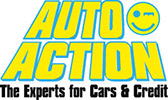
Test driving a car is the most important step before purchasing any vehicle. After all, you need to know if the car you are considering to invest thousands of dollars on is right for you. It doesn’t matter if the car looks good or if the make and model have positive reviews. What matters is the degree of comfort, how the car rides, handles and performs, which is why test driving a car is imperative before purchasing it. When it comes to test driving a car, here are a few tips that can help you make the most of your experience.
Information about the car: Before you get behind the wheel, let the salesperson walk through the car’s features. Listen carefully, and make sure this is the car you had in mind and that the salesperson knows what they are talking about. Ask questions, too, or jot down a few notes.
Visual inspection: Before entering the car, inspect the body for any significant dings and dents. Look for signs of visible rust or the telltale signs of bubbling paint around the fenders. You don’t have to kick the tires, but you do want to check the tread on them. Make sure there is no wear.
Entering the vehicle should be easy: Avoid any struggling getting in or out of the vehicle. If you bump your head or elbows, or maneuver to get in and out of the vehicle, imagine doing this every single time you get in and out of the car for five years or more.
Comfort and visibility: Make sure that the seat can be adjusted to your ideal position with headroom and back support. Ask yourself: are you comfortable? Check for visibility from behind the wheel. You want an unobstructed view at the wheel, able to see pedestrians and bikes crossing from side-to-side, as well as any other vehicles ahead or approaching from behind. Are the blind spots significant? Side and rearview mirrors should be easily adjustable.
Dashboard layout and controls: Because every dashboard is different in every model car, make sure this one is something you can live with. Check where the windshield wipers and headlight controls are. They should be easily accessible while driving.
How does the car handle and ride? Once you get on the road there are several things to give attention to. Your test ride should be on city or town streets and also out on the highway. Note how well the car rides and handles. Is it comfortable on the road? Is it easy to maneuver through curves or make tight turns? Is the steering easy? Too heavy steering can make town and city driving difficult after a while, and too light a steering can make a car difficult to control.
Acceleration: Note how well the car can accelerate. Can the car accelerate in traffic when needed? Make turns at intersections or from a stop sign onto a busy street? Gaining speed quickly while merging on highways is essential. Make sure the car can accelerate.
Suspension and brakes: Drive over railroad tracks or down a bumpy road to see how well the car handles under difficult conditions. Test the braking in town and out on the highway. Note how long it takes to stop and if there is any vibration in doing so.
Transmission: Observe the feel of the transmission. If you are driving a manual transmission, make sure the clutch depresses easily and does not stick. The gears should shift smoothly. On automatics, note how well the car shifts when you accelerate, and particularly how it shifts on hills.
Noise: Cabin noise should be at a minimum while driving. There’s nothing more annoying than the sound of tires whining over the sound system. If you can hear tires on the road or if you have to raise your voice while having a conversation then the cabin noise in your car is too loud.
Air, heating and amenities: Be sure to check the AC and heat. Make sure the fan works—not only that it is functioning but that it works at all intervals and is powerful enough. Consider the amenities. How well does the sound system—sound? Does the car have a CD player or only USB ports? How does the navigation system work? Is the visual clarity of the rear-view camera adequate? Make sure all amenities are functioning.
After you have completed your test drive, take a minute to jot down your reactions and impressions. Keep in mind that finding the car you want is worth the time it takes. Therefore, it’s always a good idea to test drive at least three cars, and by writing down your impressions after the test drive it will be easier to compare and contrast the rides later. Once you find the car you want, ask questions about the vehicle warranty, maintenance costs, inspections, and dealership basic services. Above all, don’t allow the salesperson to pressure or coerce you, either. Make up your own mind and get the car that works best for you.
Ready to get started? Check out our extensive inventory of quality used cars and give us a call today!
